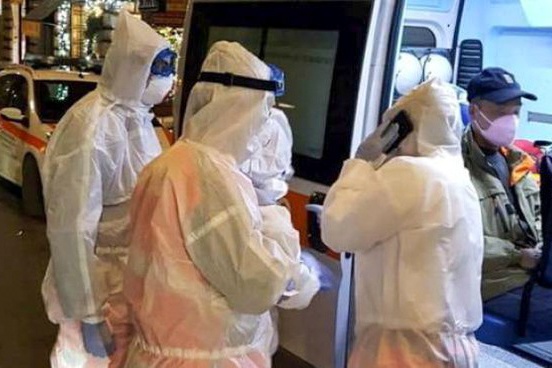
Ambulance drivers in times of Coronavirus: don't be silly
The severity of coronavirus is for anyone a problem which must not be left aside. In particular, first responders, paramedics and ambulance drivers of any corner of the world must be very careful from now on.
The last thing the ambulance drivers has to do in these moments is to behave like a silly. In Italy, where coronavirus outbreak is causing severe difficulties to population, the EMS and hospitals are in intense distress. In Emilia Romagna, a local dialect sees the term “pataca” as the definition of an “unprepared” person who rustles up. No first responder or ambulance driver can behave as a “pataca”, least of all in these hours of a health emergency.
The Italian health system and the entire country’s economy are going into crisis because of this coronavirus outbreak. In recent weeks, they never had fought such a war. This situation is bringing to dramatic consequences for public health and also in terms of resources supply. Since a few weeks ago, medical material abounded in the warehouses of the health system. Now, the situation is getting even worse.
What we need to do is use the skills and humility in carrying out our profession. All of us. Let’s put aside the idea of thinking only about us. We have to think about what’s best for everyone. Between the various health organizations, we must try to reason in professional and scientific terms, without panicking or getting in uncontrolled anxieties linked to factors that are not scientifically reflected.
First, let’s resume the old habits, like cleaning the ambulance at the beginning and end of each shift. In particular, it is a good habit for an ambulance driver and first responders, in general, to clean the steering wheel and the driving compartment of the ambulance, paying attention also to the most hidden and often forgotten parts, such as behind the seats.
Collaboration among crew members must also lead to the division of tasks and carry out the same operation even in the sanitary compartment. They must give particular attention to the handrails and the parts most in contact, such as the side rails of the stretcher and drawers.
Ambulance drivers and first responders must carry out the checklists in a meticulous way, with particular attention to the personal protective equipment (PPE) provided to deal with contact with patients affected by coronavirus.
It is essential to carefully read the protocols issued by the Emergency Center of reference and to the Government precautions. Each country and the WHO are systematically updating the information on coronavirus throughout the world.
No one can interpret new issued protocols and guidelines on his own. Even if many of us can be sceptic, we must bear in mind that we are working and in contact with other people and colleagues. For their safety, we must follow the indications.
In a nutshell, underestimating the problem can cause damage to our health, just as the above assessment can cause damage in using, for example, devices and resources that should instead be diverted to real needs; the high assessment can also convey unjustified anxieties towards users.
One of the figures most involved in the emergency of COVID-19 is that of the hygienist doctor, who is available to the staff according to the indications given by the regions and by the Medical Dispatch Centre.
The role played by the rescuer driver staff is certainly not that of answering questions of a health nature and any curiosity on the part of citizens, and even for the most straightforward questions, our interlocutor must be invited to use local and national toll-free numbers.
We also remember that in no case should we panic, which is generated by anxiety, fear and lack of objectivity.
Rational use of resources and a variation of our daily habits, aimed at real needs indeed lead to a solution of the problem, as well as to the interventional response that is the basis of the role covered.
(In the next few hours this article will be updated with some WHO points, I will attach them just below).
READ THE ITALIAN ARTICLE


